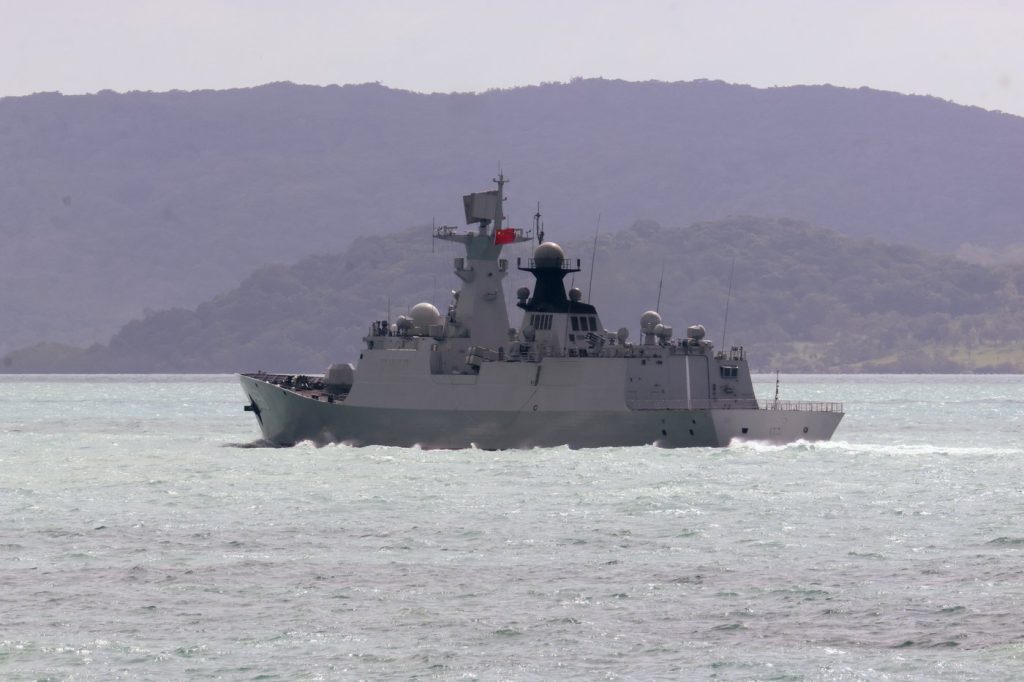MELBOURNE, Australia (AP) — The Australian and New Zealand militaries are closely monitoring three Chinese warships as they navigate unusually far south along Australia's east coast, raising concerns about their mission, officials disclosed on Thursday. The warships, identified as the naval frigate Hengyang, cruiser Zunyi, and replenishment vessel Weishanhu, have traversed through Southeast Asia and the Coral Sea before reaching the eastern Australian coastline.
Defense Minister Richard Marles confirmed that the Chinese vessels were located off the east coast of Australia, specifically reported to be approximately 150 nautical miles (278 kilometers) east of Sydney. While Defense officials refrained from commenting on a Financial Times report detailing their precise location, Marles emphasized that this deployment is not unprecedented but is indeed unusual for Chinese naval activity.
According to Marles, the Australian navy and air force are actively monitoring the ships' movements, as they traverse international waters within Australia's exclusive economic zone, a region where Australia holds exclusive economic rights beyond its territorial waters. Marles stated, "They’re entitled to be where they are; Australia is also entitled to be prudent," highlighting the nation's commitment to carefully observing the Chinese task group’s activities.
In response to inquiries about the situation, China's foreign ministry spokesperson, Guo Jiakun, expressed a lack of awareness regarding the warships' deployment. Meanwhile, China's Embassy in Australia has not provided any comment about the incident. Marles further revealed that Australia is engaging with Papua New Guinea and New Zealand regarding the presence of these Chinese vessels, noting that the Chinese task group had navigated around Papua New Guinea before reaching Australia's economic zone.
New Zealand's Defense Minister, Judith Collins, confirmed that New Zealand’s military is coordinating efforts with Australia to monitore the Chinese ships. She highlighted that their government has yet to receive any information from China about the purpose of the warships' deployment or their future plans in the region.
Experts in naval affairs highlight that the activity of Chinese warships so far south is rare and view it as a part of China's broader strategy to project power globally. Jennifer Parker, an associate expert from Australia's National Security College, remarked that this operation showcases the capabilities of the People's Liberation Army Navy (PLA-Navy) to operate in Australia’s maritime domain.
The deployment coincides with a visit from Admiral Samuel Paparo, head of the U.S. Indo-Pacific Command. However, Parker believes the timing is likely coincidental, given the nature of military deployments being planned well in advance of official visits. She stated, "Without knowing exactly where the ships are going, the point of this deployment... is to demonstrate to Australia that they have the capability to come down and operate in our maritime domain."
Prime Minister Anthony Albanese addressed concerns raised by the presence of Chinese warships, stating that while the vessels are complying with international law, Australia is vigilantly monitoring the situation. In previous years, three Chinese warships had visited Sydney Harbor, although that particular visit was sanctioned by the Australian government.
Despite improvements in diplomatic and trade relations between Australia and China, tensions remain between their militaries. Recent interactions have been marred by accusations, including an instance where Australia protested an unsafe interaction involving a Chinese fighter jet allegedly endangering an Australian military surveillance plane in the South China Sea. Guo Jiakun countered Australia’s claims, accusing their aircraft of deliberately intruding into disputed airspace over the Paracel Islands.










